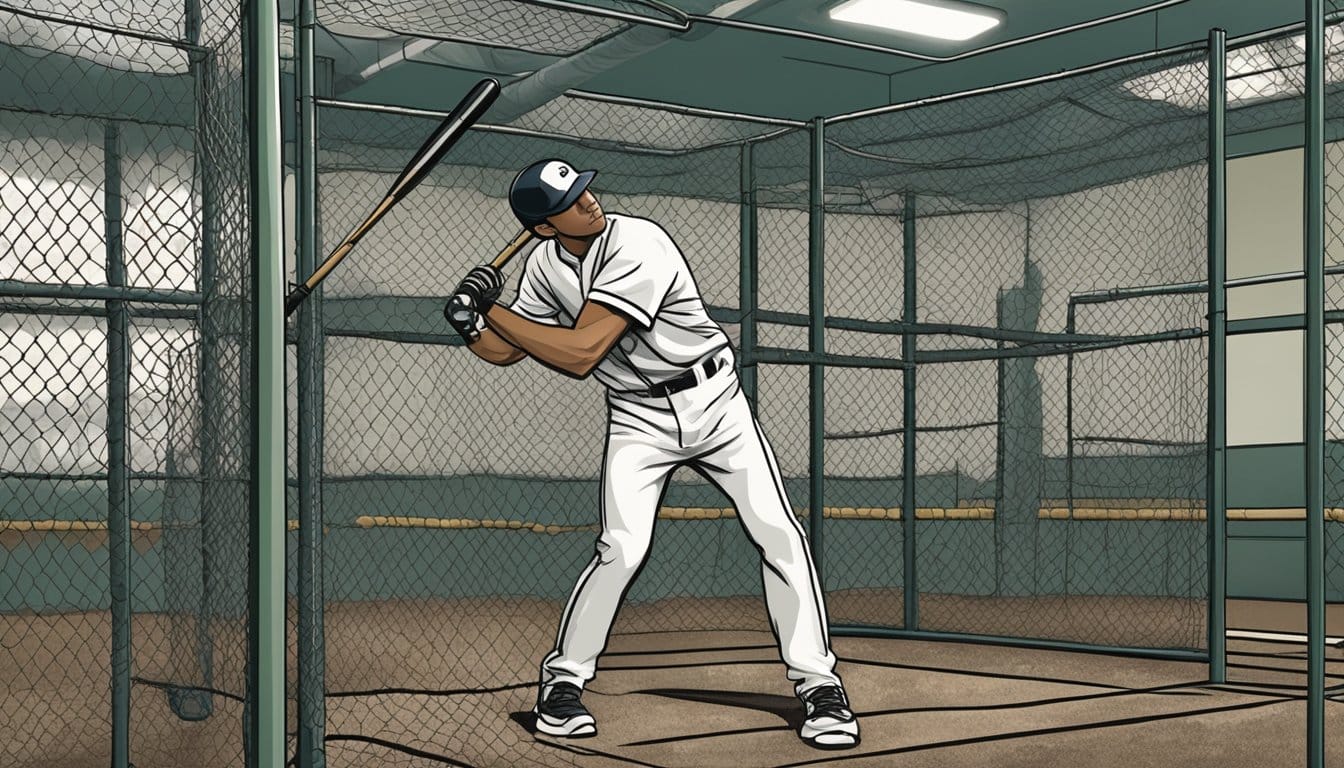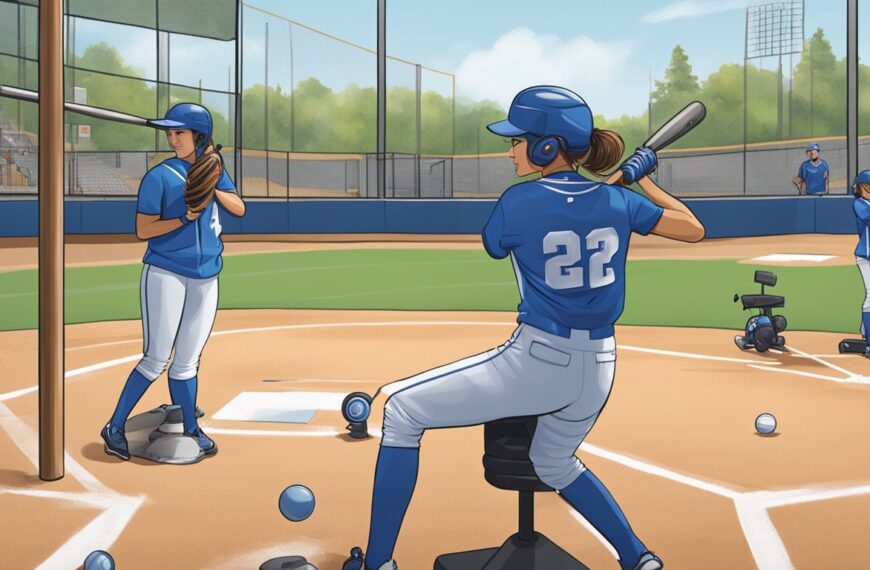Engaging in sports practice with technological aids like pitching machines has grown increasingly popular. They are particularly prevalent in baseball and softball, where they serve as reliable tools for batters to improve their hitting skills. What may not be so widely recognized, however, are the numerous psychological benefits that accompany the consistent use of pitching machines. These benefits stem not only from their ability to provide repetitive practice but also from the confidence and mental fortitude they foster in athletes.
The psychological edge gained from practicing with pitching machines can be as impactful as the physical skills honed during these sessions. The machines offer a controlled environment, allowing players to focus on their technique and mental preparedness without the variability of live pitching. This consistent practice environment helps to build a batter’s confidence while reducing anxiety and fear of failure. Regular interaction with a pitching machine can also promote a sense of accomplishment and self-efficacy as players see tangible improvements in their performance.
Key Takeaways
- Pitching machines contribute to improved confidence and reduced player anxiety.
- Regular use enhances mental preparedness and fosters a sense of achievement.
- The controlled environment of a pitching machine aids in focusing on technique and consistency.
Understanding Pitching Machines
Pitching machines offer a consistent and controlled pitching experience, crucial for hitters looking to improve their skills. They vary in complexity from simple mechanical designs to advanced models with various settings.
Types of Pitching Machines and Their Functions
There are several types of pitching machines, each serving a specific purpose in the development of a hitter’s skill:
- Wheel-Operated Machines: These machines use one or more spinning wheels to propel the ball, allowing for a variety of pitches with speed and direction control.
- Arm-Style Machines: Mimicking the action of a human pitcher, these machines employ a mechanical arm to throw the ball, offering a more realistic pitching motion.
- Compressed Air Machines: Utilizing pressurized air to launch the ball, these machines provide highly accurate and adjustable pitch speeds and types.
Each type of machine allows hitters to practice specific batting scenarios by adjusting the speed and type of pitch, from fastballs to curveballs.
Components and Maintenance
The durability and longevity of pitching machines are contingent upon proper care and routine maintenance. Key components include:
- Pitching Wheels: Need regular cleaning to maintain grip and remove debris.
- Mechanical Arm: Requires lubrication to preserve smooth motion and prevent wear.
- Control Panels: Should be checked routinely to ensure functionality and accuracy of settings.
Maintenance activities typically involve:
- Regular inspection for wear and timely replacement of parts.
- Periodic software updates for automated pitch settings.
- Ensuring a clean and dry storage environment to prevent rust and corrosion.
Good maintenance not only prolongs the longevity of the machine, but it also ensures a safe and consistent training experience. These machines represent a significant investment, so upkeep is critical to protect their value.
Psychological Advantages of Using Pitching Machines
Using pitching machines offers significant psychological benefits to batters, shaping their mental approach to the game. It enhances their comfort and confidence, reduces stress, sharpens their concentration, and fosters mental toughness, essential for facing live pitchers.
Boosting Confidence and Comfort at the Plate
A batter’s confidence at the plate is crucial, and pitching machines contribute by providing consistent pitches. This consistency allows batters to refine their swing mechanics, increasing their comfort level with various speeds and types of pitches. Repeated exposure to simulated game conditions helps batters feel more prepared and confident, translating to an improved mindset during actual games.
- Consistency: Pitching machines deliver reliable pitches, enhancing a batter’s timing and predictability.
- Preparation: Regular practice against machines aids in expecting and handling live pitch scenarios.
Stress Reduction and Concentration Improvement
The controlled environment of a pitching machine session reduces pressure and emotional distractions. Batters can focus on one pitch at a time, improving their concentration and ability to remain calm under game conditions. The repetitive nature of machine practice promotes a focus on the process rather than the outcome, resulting in a more relaxed and focused demeanor when it’s time to step up to the plate.
- Controlled Pressure: Eases the adaptation to game-level stress.
- Enhanced Focus: Aids in filtering out distractions, honing concentration on the task at hand.
Developing Discipline and Mental Toughness
Regular practice with pitching machines fosters discipline and mental toughness by simulating game-like adversity. As batters work on hitting different pitches and speeds, they learn to adjust and persist, qualities that define a mentally tough player. Through disciplined practice, they build resilience to handle pressure situations, leading to consistent performance and success.
- Adversity Simulation: Builds resilience by exposing batters to challenging pitches.
- Routine Development: Instills a disciplined approach to practice and gameplay.
Technical Skills Enhancement
Practicing with pitching machines offers distinct advantages for enhancing technical batting skills. This methodical approach facilitates the development of proficiency in hitting, honing key aspects like accuracy and power.
Improving Hitting Techniques
Hitting for Power: Regular sessions with a pitching machine enable batters to focus on strengthening their swing mechanics. Through repetition, players can enhance their batting technique, effectively transferring weight and generating more power behind each hit.
Skill Development: Working with a pitching machine allows for the isolation and iterative practice of specific batting angles and techniques, leading to a more skillful and technically sound swing.
Hand-Eye Coordination and Reaction Time
Hand-Eye Coordination: Precision in timing and swing are closely tied to hand-eye coordination. The consistent pace of a pitching machine helps batters refine this skill, allowing for better judgment and contact with the ball.
Reaction Time: The adjustable speed settings of pitching machines test and improve a batter’s reaction time, which is crucial for facing live pitchers. Prompt recognition and swift response to pitches become second nature with repeated practice.
Consistency and Timing in Swings
Consistency: A key benefit of using pitching machines is the development of a reliable and repeatable swing. Each swing can be practiced to perfection, leading to a consistent batting performance.
Timing and Rhythm: The ability to anticipate and time swings is critical for successful hitting. The predictability of pitching machines provides an excellent platform for batters to practice their timing and establish a rhythm conducive to hitting for both average and power.
Strategic Training With Pitching Machines
Leveraging pitching machines for strategic training enhances a player’s approach by allowing them to work on weaknesses and adapt to a multitude of pitch types. By simulating game-like conditions, players can develop a robust game plan and reinforce their batting strengths.
Developing a Game Plan
When forming a game plan, a pitching machine serves as a consistent ally, enabling hitters to prepare for various scenarios. Players can practice drills specific to an anticipated pitcher or game situation, focusing on:
- Identifying their personal zone of strength where they are most effective.
- Establishing a plan that leverages those strengths during a game.
Targeted Practice for Weaknesses
Weaknesses in hitting can be systematically addressed by:
- Isolating the zone where a batter struggles and repeatedly practicing in that area.
- Using the pitching machine to throw pitches that exploit their limitations, allowing for focused improvement.
Adapting to Different Pitch Types
Pitching machines offer a wide variety of pitches at different speeds including curveballs and changeups. This variety helps batters adapt to:
- Variety of pitches: Players encounter a speeds range and consider how to adjust their timing and approach.
- Pitch types: Batters become comfortable with more complex pitches like curveballs, enhancing their preparation for real-game scenarios.
Coaching and Practice Optimization
The integration of pitching machines in baseball training provides coaches with powerful tools to enhance players’ performance through targeted practice and data-driven insights. Practicing with pitching machines allows for increased repetitions and consistency, which are crucial for skill development in baseball players.
Creating Effective Drills
Drill Design: Coaches can craft drills that focus on specific weaknesses in a player’s technique. Practice sessions with pitching machines should be structured so that batters face a variety of pitch types and speeds. This variation helps players improve their timing and control at the plate.
- Consistency: A pitching machine delivers consistent pitches in terms of speed and location, allowing players to work on their swing mechanics repetitively.
- Progress Tracking: Coaches can set quantifiable goals for each drill, like hitting a certain number of pitches into designated field zones.
Insights and Analysis for Performance
Data-Driven Feedback: By scrutinizing performance metrics from practice sessions, coaches can offer concrete tips and tricks backed by data. Many modern pitching machines are equipped with technology to track speed, spin rate, and accuracy, giving players and coaches immediate feedback for improvement.
- Technique Adjustment: Analysis of performance data can identify technique modifications needed to enhance control and power.
- Performance Trends: Over time, coaches can observe performance trends to develop a player’s consistency and adaptability to different pitching styles.
Using pitching machines in coaching and practice sessions helps optimize a baseball player’s performance and provides valuable insights for continual development.
Emotional and Social Aspects of Practice
Practicing with pitching machines can significantly influence the emotional and social development of baseball players. This practice fosters stronger team dynamics and helps individuals manage the psychological pressures associated with the sport.
Building Team Dynamics and Communication
When teams use pitching machines, they create opportunities for players to work together, strengthening teamwork and enhancing communication. Baseball players can rotate between batting and fielding during these sessions, providing continuous feedback to one another. Coaches play a critical role here; they coordinate these exercises, ensuring that every team member understands their role and how to best support their teammates, while also working on their technique.
- Feedback loops: Constructive communication is established through consistent feedback among players.
- Role clarity: Coaches help players understand their responsibilities, contributing to more efficient teamwork.
Overcoming Fear and Performance Anxiety
The consistent use of pitching machines helps baseball players build confidence by simulating various pitch types. This regular exposure reduces fear and performance anxiety during actual games.
- Predictable environment: Pitching machines provide a controlled setting, helping players to gradually face and adapt to different pitches without the pressure of a live pitcher.
- Incremental challenges: Players can increase the machine’s speed and complexity as they grow more confident, allowing them to progress at their own pace and build resilience against game-day pressure.
Additional Considerations
In evaluating the psychological benefits of using pitching machines, it’s imperative to consider practical aspects such as safety measures, cost-effectiveness, and technological enhancements that contribute to the user’s experience.
Safety Measures and Protective Gear
Proper safety measures are crucial to prevent injuries when using pitching machines. A controlled environment where users wear protective gear such as helmets and batting gloves is essential. Utilization of safety nets or cages ensures that balls are contained, mitigating risks for both the batter and bystanders.
- Essential Protective Gear:
- Helmet with face guard
- Batting gloves
- Elbow and shin guards
- Protective cup (for male players)
Cost-Benefit Analysis of Pitching Machines
Investment in pitching machines must be weighed against the benefits they provide. The initial cost can be considerable, yet automation and controlled pitching offer significant advantages for player development.
| Aspect | Consideration |
|---|---|
| Initial Cost | Potentially high, depending on the sophistication of the technology. |
| Long-Term Value | Savings on pitching staff, consistent and diverse practice opportunities, and potential for fewer injuries due to controlled pitching conditions. |
| Psychological | Enhanced confidence and skill development without the pressure of live pitching or time constraints; players can practice at their own pace in a stress-free environment. |
| Resale Value | High-quality machines retain value and can be resold if maintained properly. |
Enhancing Player Experience With Technology
Advances in technology not only improve safety and cost efficiency but also enhance the experience for the player. Features such as adjustable speeds, pitch types, and repetition automation contribute to a customizable practice environment that can be tuned to individual needs.
- Technological Features:
- Varied pitch speeds and types
- Programmable pitch sequences
- Automated ball feeding systems
- Real-time data analytics for performance feedback
Integration of technology ensures that players receive a consistent experience, thereby allowing them to focus mentally on improving their game without external pressures.
Frequently Asked Questions
This section aims to address common inquiries regarding the psychological benefits of practicing with pitching machines, providing insights into mental health advantages, timing, performance enhancement, confidence, and training outcomes.
What are the mental health advantages of using a pitching machine for practice?
Using a pitching machine can help reduce stress and provide a meditative rhythm for the batter. It offers a controlled environment which allows the player to focus on their technique without external pressures.
In what ways can a pitching machine enhance a hitter’s timing and rhythm?
A pitching machine offers consistent pitch speeds and locations, enabling hitters to develop a reliable timing and rhythm. Repeated practice in these stable conditions leads to muscle memory and timing improvement.
How does the consistent use of a pitching machine improve a player’s batting performance?
Consistent practice with a pitching machine allows players to increase their hitting accuracy and power. The predictability of pitches improves their ability to anticipate and react, leading to better batting performance in live game scenarios.
Can the use of pitching machines reduce anxiety and increase confidence in players?
Practicing with pitching machines can diminish performance anxiety as players become more accustomed to hitting pitches. The repeated success in a low-stress setting builds self-assurance, which can translate to increased confidence during games.
What are some effective tips for utilizing pitching machines for maximum psychological benefit?
Players should focus on setting realistic and specific practice goals, and use visualizations during sessions with pitching machines. It’s also important to approach each session with a positive mindset to reinforce confidence.
How accurate are pitching machines, and how does this accuracy affect a player’s training outcomes?
Pitching machines are highly accurate and can be adjusted to simulate various types of pitches. This precision allows players to practice specific batting scenarios and improve their adaptability and decision-making skills.
















